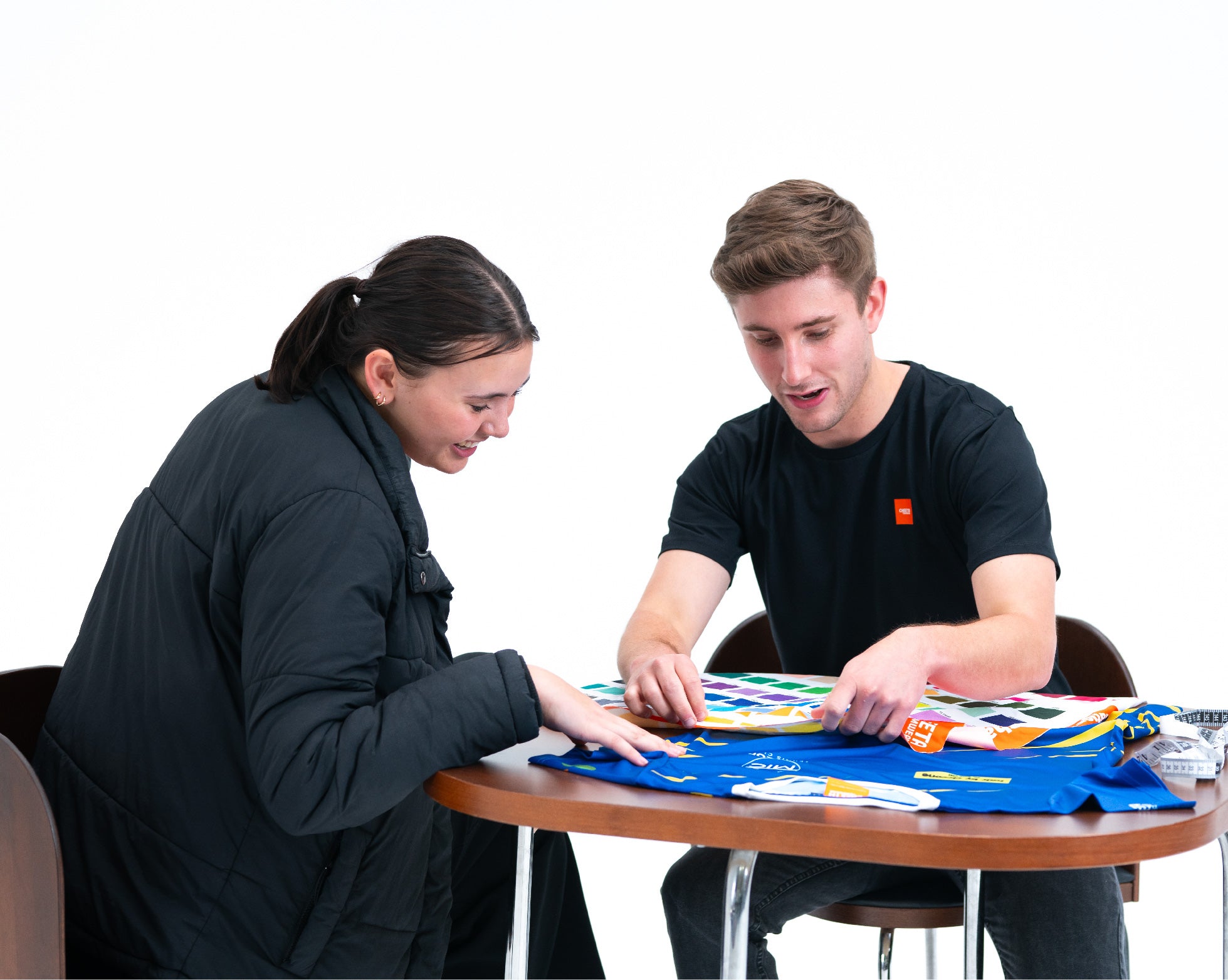Table Of Contents
Introduction
Decoration Methods
Conclusion
Introduction
Nowadays, there are plenty of different decoration techniques to customise your uniform and apparel. So how do you know what is best for you? Read on to find out the difference between our most popular branding methods.
Decoration Methods
Sublimation:
Sublimation allows for complete custom designs, colours, and intricate patterns.
The process involves the design printed out on special paper. The design is then transferred onto the fabric using a heat press. The press heats the design to the exact temperature where the ink turns from solid to gas. This gas then "transfers and absorbs" into the fabric. After this, the material is cut and sewn into the desired garment.
With sublimation, you can capture a high level of vibrancy and detail. Design ideas are only limited by your imagination!
Sublimation also allows for customisations such as individual names and numbers easily. At Cheeta Teamwear, we offer these customisations for free on sublimated garments.
With modern sublimation printing, you can get photo-like quality of as many logos as you can fit on a garment at no extra cost. You no longer need to be conscious of additional logos blowing the budget.
Since the design is infused into the fabric, this technique gives a smoother, longer-lasting finish than traditional printing methods.
This technique is common amongst sporting teams, particularly in football codes, hockey, and basketball, as well as for events and promotional garments that require lots of logos or customisations.


Screen printing:
Screen printing is the "traditional" branding method. It involves the creation of a screen for each colour in the logo and transferring the design one colour at a time using ink and a press.

Colours must be applied as individual layers when screen printing. Special inks are used so that colours do not run or blend, and an oven may be required to set the ink.
Screen printing has been around for a long time and can achieve bright, vibrant colours even on dark clothing items. They are typically favoured for large runs of items as they are most cost-effective in larger numbers (as the setup costs are spread wider).
Each logo on a screen-printed garment requires a separate setup which can increase the costs of the garment. Colour changes (such as white printing on black shirts and black printing on white shirts) are possible without additional setup fees.
If a garment has been properly screen-printed by a trained professional, there is little risk of the colours fading, washing out, or otherwise being damaged when cared for appropriately.
Screen-printed garments typically have a rougher finish than other garment printing methods such as direct to film or sublimation.
It is important to note that screen printing is not available on all garment types. This limitation is because the ink needs to be set through an oven, which would cause some fabrics to melt.


Direct to film:
Direct to film is the "new and improved" garment printing process. This process involves a particular type of print that is initially printed onto transfer paper and then applied to the garment using heat. The design is "pressed" against the garment in a machine similar to a sandwich press.
These are quicker to set up and use than screen printing as they only have one setup per logo. However, any variations in the logo (such as needing to swap from a black logo on a white shirt to a white logo on a black shirt) need to be treated as brand new logos.
Direct to film is generally used for smaller run orders or orders with lots of colours due to the setup costs associated with screen printing. Direct to film can also achieve gradients and more intricacies than traditional screen printing.
Direct to film has a nice smooth finish, feeling soft to the touch.
When looked after according to basic care instructions (cold wash, no ironing on the decoration, no tumble drying), direct to film garments are durable, long-lasting and keep their vibrancy!
Like screen printing, not all garments can be direct-to-filmed due to the temperatures of the press.
Embroidery:
Another classic decoration technique, embroidery involves stitching your design onto the garment's fabric using thread and a needle. The stitching used to be done by hand in the past, but modern technology allows for an automated process and more accuracy.

Embroidery is considered the "premium" decoration method because it looks professional and is often associated with businessmen. It has been around a long time, and the process is well-refined.
Some limitations of embroidery exist, however. It cannot capture extremely detailed logos, small text, or gradients within logos. You are also limited in colours to the different thread colours available.
Embroidery generally has more of a 3D feel than other decoration methods due to the build-up of threads in the decorated area. You can also opt for 3D embroidery on garments such as hats, whereby the embroidery appears to "pop out" of the garment.

Conclusion
In summary, there are multiple different decoration methods available to you for your custom uniforms and apparel. As experts in this area, Cheeta Teamwear are here to help you decide the best option for your specific needs. Please feel free to give us a call or send through an enquiry today to learn more.



